You know that sour feeling you get when people ignore your participation – or don’t bring you into the conversation? It triggers a chain of pounding questions about your worth as a colleague, and more broadly as a member of the larger organization (and oftentimes, even beyond). It can be hard to stop ruminating over the experience and get back to work.
This kind of behavior doesn’t just affect mental health and general productivity: it harms the level and effectiveness of deep thinking and creative brainstorming. When diverse perspectives – from people with different knowledge bases, ethnicities, ages, sexual orientations, etc. – aren’t recognized or valued as essential to the collaboration, innovation suffers and risk skyrockets.
This leads to compromised counsel for clients and sub-optimal operational decisions for a firm. This has direct negative implications on client loyalty and revenue; it worsens lawyers’ sense of pride, engagement, and wellbeing.
Empirically demonstrated outcomes of smarter, inclusive collaboration
Fortunately, lawyers and other legal professionals can take steps to create a culture of inclusivity and smarter collaboration – and see all the associated benefits in their organization and within themselves. Our decade-plus of research at Harvard and with hundreds of law firms and in-house legal departments has surfaced five major strategies:
- Understand people’s uniqueness and embrace those differences as an asset: If you don’t know what special skills and perspectives people bring to the table, it’s much harder to leverage those resources. Intentionally create space and open conversations that could reveal a wide range of viewpoints and capabilities in certain areas. Take a break from any agendas, asking questions and listening with an open mind. Use a psychometric tool (such as the new Smarter Collaboration Profile) to identify others’ collaboration-related defaults (e.g., trusting versus wary).
Then you can create stellar teams, with the right set of expertise and perspectives to tackle an issue, and empowerment to bring forth this knowledge.
- Measure inclusivity: Beyond tracking the representation of different groups within the organization and on projects, measure whether the people in those groups are actively engaged in the core work of the organization (not just the menial, leftover tasks). This can be done through database analysis and/or pulse surveys. Questions to answer include:
- To what extent are they engaged in valuable, client-facing work?
- Who is reaching out to the broader organization, and how extensively do their peers respond?
- Do people feel they belong, are valued, and are listened to?
- Build and nurture a learning culture: A learning culture encourages curiosity about different perspectives and ways of operating, and growth through trying new approaches. Mistakes and failures are to be expected, and even viewed as opportunities – provided they result in learning.
In the military, for example, “after action reviews” are often used to collectively discuss what happened, what contributed to the outcome, and how things will be done differently next time. At a more individual level, giving feedback based on the recipient’s personal style helps people accept and benefit from the input. There are tools that can help a firm with this feedback (such as the Smarter Collaboration 360) to help with this.
- Check your biases: A lack of inclusion may play out in less obvious ways. When we interviewed client lead partners about their choices for a successor, they tended to say things like “Well, my client is happy and well served, and it’s critical that we appoint someone whom they’ll trust as much as they trust me.”
Subconsciously – and sometimes not so subconsciously – this search for a “trustworthy” successor causes the leader to appoint a mini-me, who is very often not a member of an underrepresented community.
- Role model authenticity and expect nothing less: Our research shows again and again that high-performing collaborators thrive because they bring their authentic self to conversations, both with clients and within the firm. Simultaneously, underrepresented colleagues feel less free to present their full self – and it is exhausting.
Fortunately, smarter collaboration – and all the mindsets, skills, and behaviors that are part of it – creates the ideal environment to invite, understand, and fully embrace diversity
For more advice on boosting wellbeing and performance through smarter, more inclusive collaboration, check out Chapter 10 of my (Gardner) bestselling book Smarter Collaboration: A New Approach to Breaking Down Barriers and Transforming Work. And if you have any of your own insights on this topic, we’d appreciate hearing from you (email: christine@gardnerandco.co).


